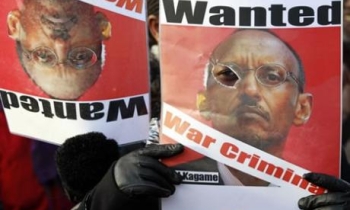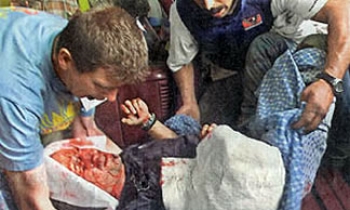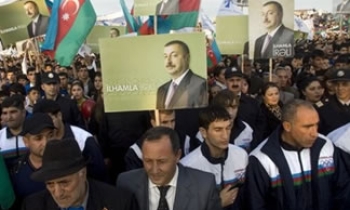On October 7, 2006, after a six-month trial, the three hired assassins who killed Marlene Garcia-Esperat, a Filipino newspaper columnist and radio commentator who probed government corruption, were sentenced to life imprisonment.

Garcia-Esperat was gunned down in front of her children in the dining room of her home on March 24, 2005. She had received many threats and had requested police protection after a third attempt on her life that year. But she still pursued high-profile investigations, including one that sought to link officials close to President Gloria Macapagal-Arroyo to a multibillion-peso scam involving government fertilizer purchases.
Garcia-Esperat’s assassins arrived during the Easter holidays, when normal life in Philippines grinds to a halt. She had told her police bodyguards to take a few days off. As evidence presented at their trial showed, they were paid just a little more than 100,000 pesos (US$2,700). Garcia-Esperat, they said, was not “big-time” and so did not command a high price.
The killers — later identified as Gerry Cabayag, Randy Grecia, and Estanislao Bismanos —monitored the journalist’s movements and routines. They bought cigarettes at the family’s sundries shop, attached to the Garcia-Esperat home, and befriended the journalist’s children, who often minded the store.
On March 24, the men visited the store several times on the pretext of buying cigarettes. According to court documents, Grecia on finding Garcia-Esperat home sent text messages to his companions to say that their target was at home.
When around 7 pm Cabayag went into the store and asked Garcia-Esperat’s daughter, Rynche, 23, for a cigarette and as she turned to get one, Rynche testified, Cabayag bolted into the house and, within moments, the pop of a gunshot could be heard. Kevin, who saw their mother when shot, recognised Cabayag as one of the men who had been at the store.
Police traced Grecia’s identity through his cellphone, and he, in turn, identified his accomplices. Nine weeks later, as police amassed further evidence, the hit men confessed to their roles in Garcia-Esperat’s death and said they had been hired by a military intelligence officer named Rowie Barua.
Barua told investigators, and later testified in court, that he hired the killers at the behest of Osmeña Montaner and Estrella Sabay, two regional agriculture department officials whose dealings Garcia-Esperat had investigated for years. Garcia-Esperat had identified the two as being at the hub of departmental corruption, and outlined detailed allegations that they had skimmed millions from government contracts.
The rare development in this case came in when the gunman and his two lookouts were sentenced to life terms, giving fruitful results to the efforts of the outraged local and international journalists, who launched intensive campaigns to bring attention to the case.
Garcia-Esperat’s case remains one of only two in the Philippines since 1992, the year Committee to Protect Journalists (CPJ) began compiling detailed research on journalist deaths worldwide in which the murderers of journalists have been convicted. It is believed that it is the extraordinary advocacy effort that led to the convictions of the three hired killers and may result in the trial of the two government officials accused of ordering the hit.
The case received wide publicity — including heavy news coverage and intensive advocacy by press groups shielded the case from political pressure. Public outrage incited the national police to create a special task force. The Supreme Court allowed the transfer of the trial from a rural outpost in Mindanao to Cebu City, where witnesses felt they would be safe. The witnesses, including Garcia-Esperat’s children, were placed in a government protection programme.
The Freedom Fund for Filipino Journalists, the National Union of Journalists of the Philippines, and CPJ all raised money to help pay legal and protection expenses. Nena Santos, a lawyer and friend of Garcia-Esperat, agreed to act as private prosecutor, helping state prosecutors not only gather and present evidence but also convince witnesses mistrustful of the police and the courts to testify.
Garcia-Esperat begun as an accidental journalist. While working as a chemist with the agriculture department there she discovered her unit was receiving just 40 per cent of the funds the government had supposedly allotted. Her investigation found that officials were pocketing millions from government contracts meant for poor farmers. She used the law to file complaints, gave testimony and also served as the department’s ombudsman.
The delay and manipulations in the results couldn’t keep her away from reporting. She exposed the corrupt deals in a programme she hosted on Radio Natin and in a column called “Madame Witness” for the Midland Review in Tacurong. Expanding her scope, Garcia-Esperat went on to document a string of corruption allegations against high-ranking officials in both Mindanao and Manila.
Philippines is now cited as one of the most dangerous places in the world to be a reporter. At least 32 Philippine journalists, including Garcia-Esperat, have been killed in direct relation to their work since 1992, as per CPJ research. Worldwide, journalists have been killed in direct relation to their work more than three times per month. The vast majority — of about 73 per cent are killed by no crossfire or dangerous assignments but are murdered.
Further analysis shows that most of these murders are never solved. About 85 per cent worldwide have resulted in no conviction at all. In less than 7 per cent of cases are both assassins and intellectual authors convicted. These sobering figures have pushed the issue of impunity to the forefront of international press freedom efforts.
“The anti-impunity battle is attracting more attention among the international press community now than it did 10 or 15 years ago,” said Juan Francisco Ealy Ortiz, head of the Inter American Press Association’s Committee against Impunity. “There is a greater awareness on the part of journalists of how impunity and violence have reduced the ability to report and, what is even worse, have encouraged self-censorship.”
Russia and the Philippines are among the world’s five deadliest nations for the press and also are among the worst in solving journalists’ murder.
The development in the Garcia-Esperat’s case though came as a benchmark; the masterminds as per middleman Barua’s detailed testimony implicating Montaner and Sabay remain free as Judge Eric Menchavez declined to indict the two men, citing a lack of jurisdiction. Advocate Santos has persisted in the meantime, gathering evidence, drafting a potential indictment, and working with police to keep the case alive as she states, “We have to get the others.”









